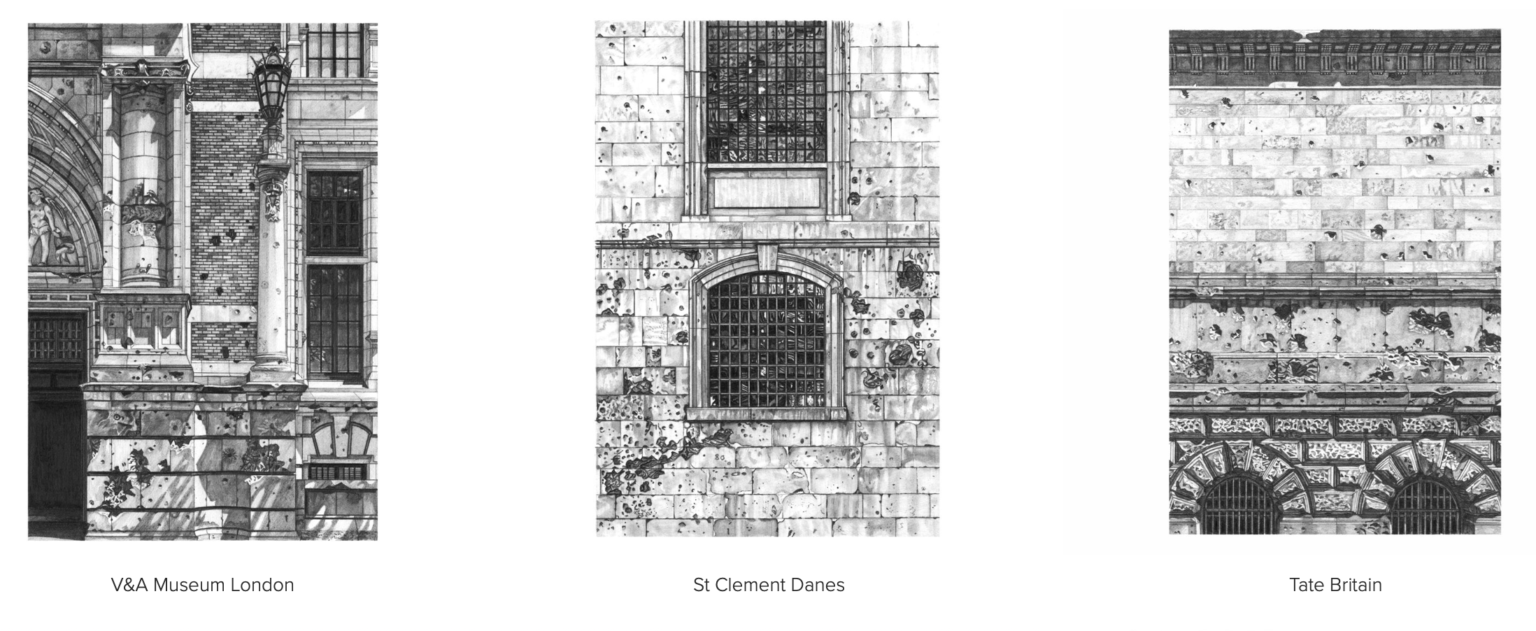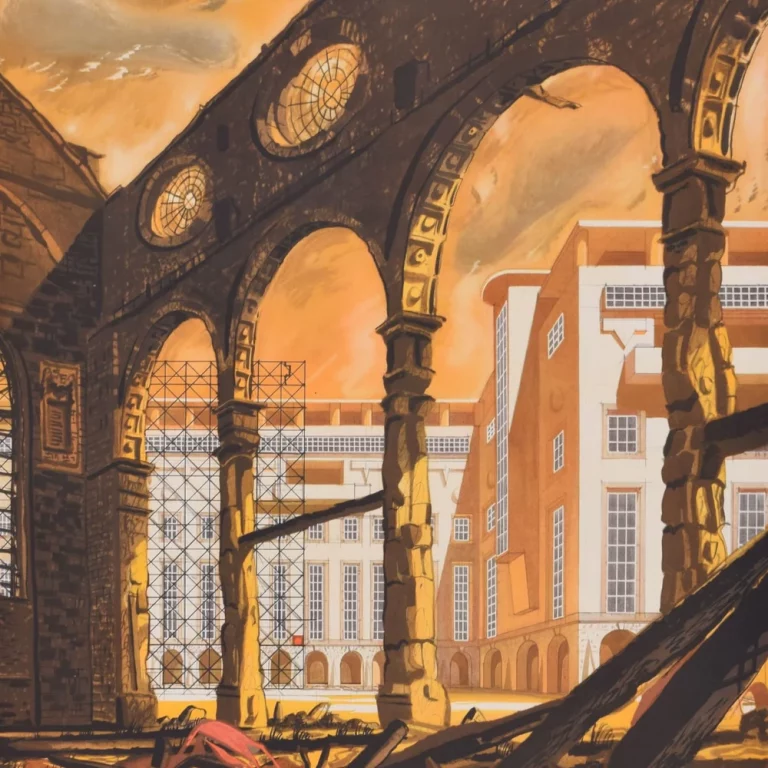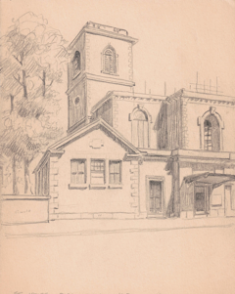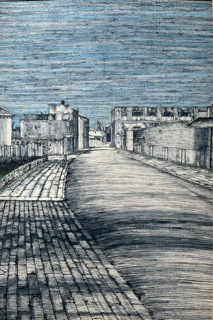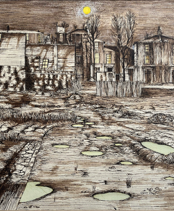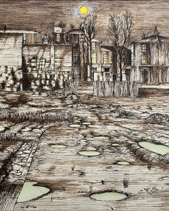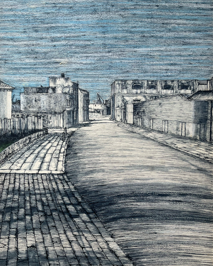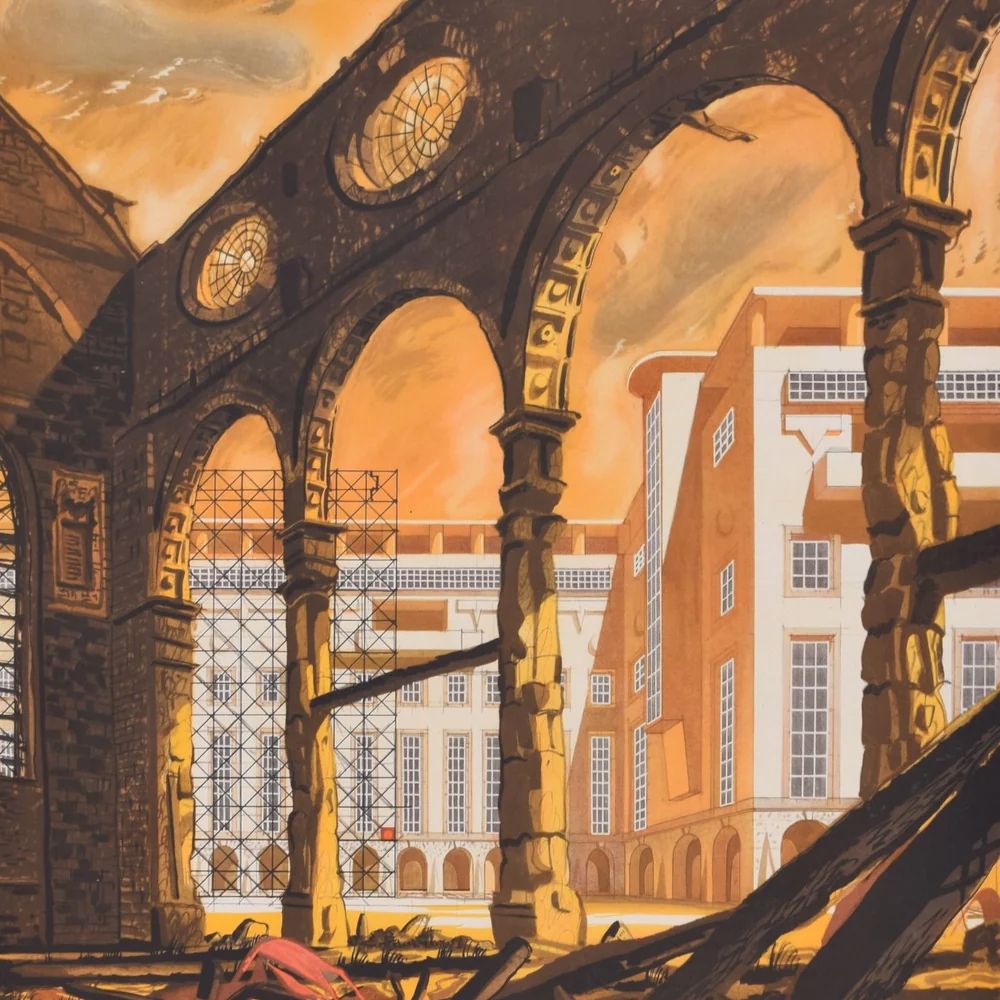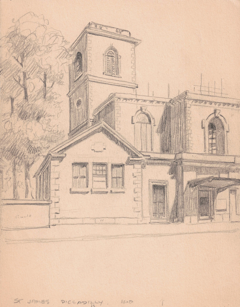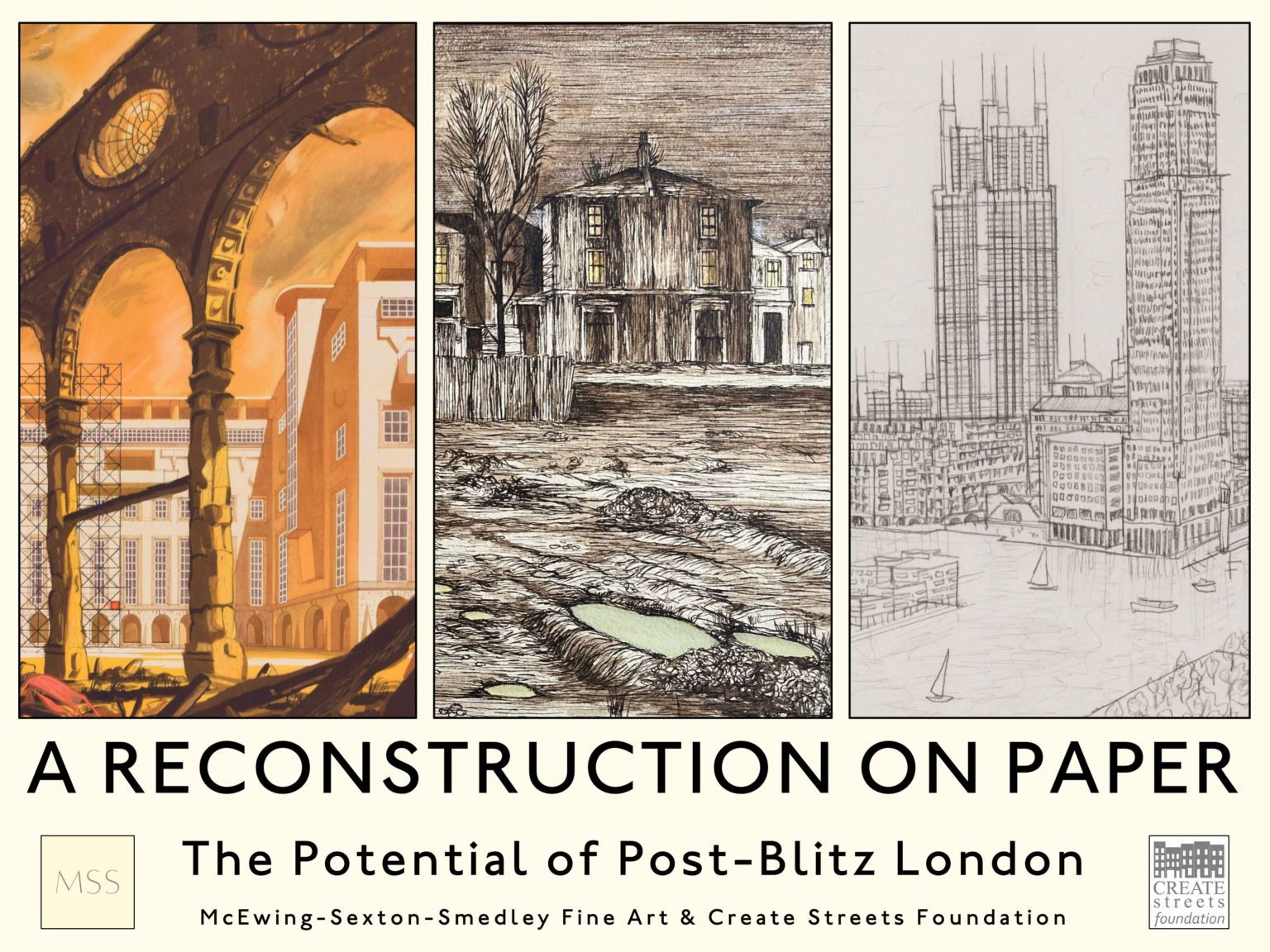
Caught between the Georgian Revival and jazz age Art-Deco of pre-war London, between the long shadow of coal-fired Victorian London and the post-war promise of a ‘new Jerusalem’, A Reconstruction on Paper explores the architectural impact of the Blitz on London. Four decades of reconstruction are covered, from studies of West End bomb damage to an observational drawing of the construction of Canary Wharf. The exhibition reflects on the opportunity as well as the horror that was offered by the Blitz’s murderous destruction and considers the degree to which London rose to the occasion.
Full catalogue of works on display book your visit
Nicholas Boys Smith writes in the foreword: The architect and town planner Sir Patrick Abercrombie’s 1944 Greater London Plan followed the spirit of Le Corbusier’s dirigiste revolution in planning theory and put it into practice. The men in Westminster, Whitehall and County Hall were mesmerised. Here surely was the future, all neatly printed and bound in one report. London would be decentralised and sliced through to help the traffic. Five enormous ringways would encircle the city, linked by dozens of radials. Mile upon mile of the ‘drab and dreary’ buildings in between would be cleaned away with half a million people compulsorily removed to new ‘satellite towns’ or newly zoned residential estates. As always, the poor would have the least choice. Forty per cent of the, heavily bombed, East End population were to be transported. Monuments and a few historic villages, such as Kensington, would be allowed to remain in aspic. Everything else would have to go. How this could have been achieved without catastrophic urban destruction is impossible to comprehend. The blitz would have been a mere irritant in comparison.
With additional works from Minty Sainsbury
